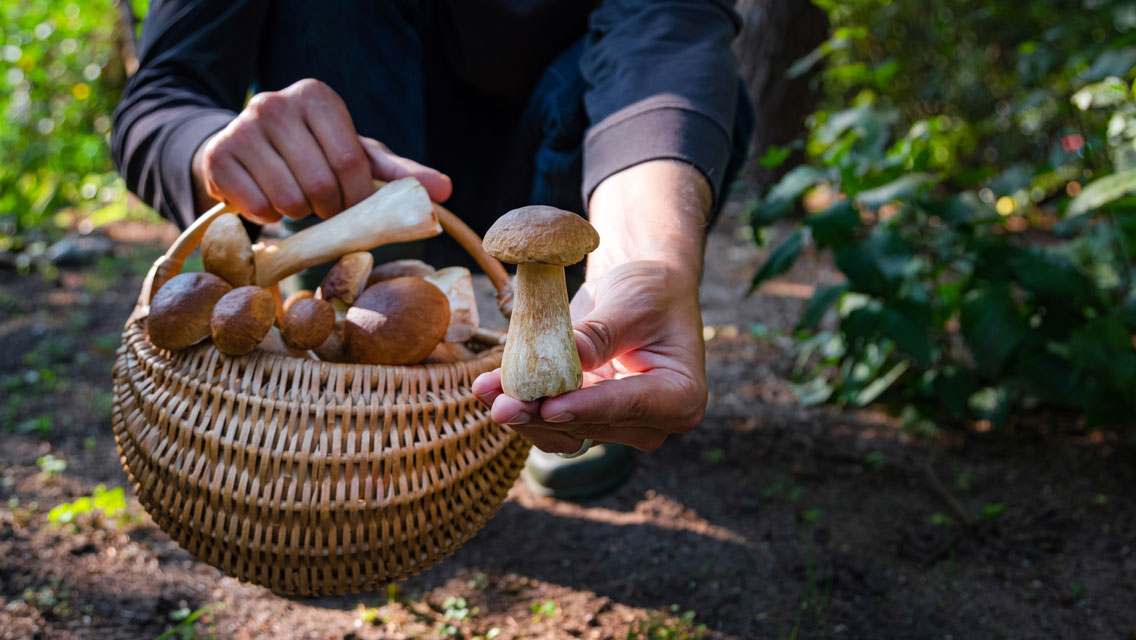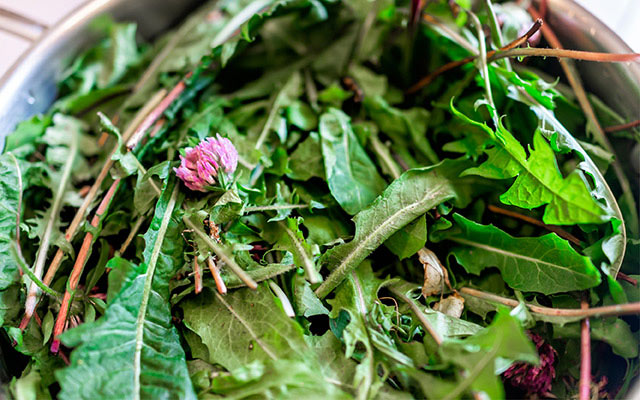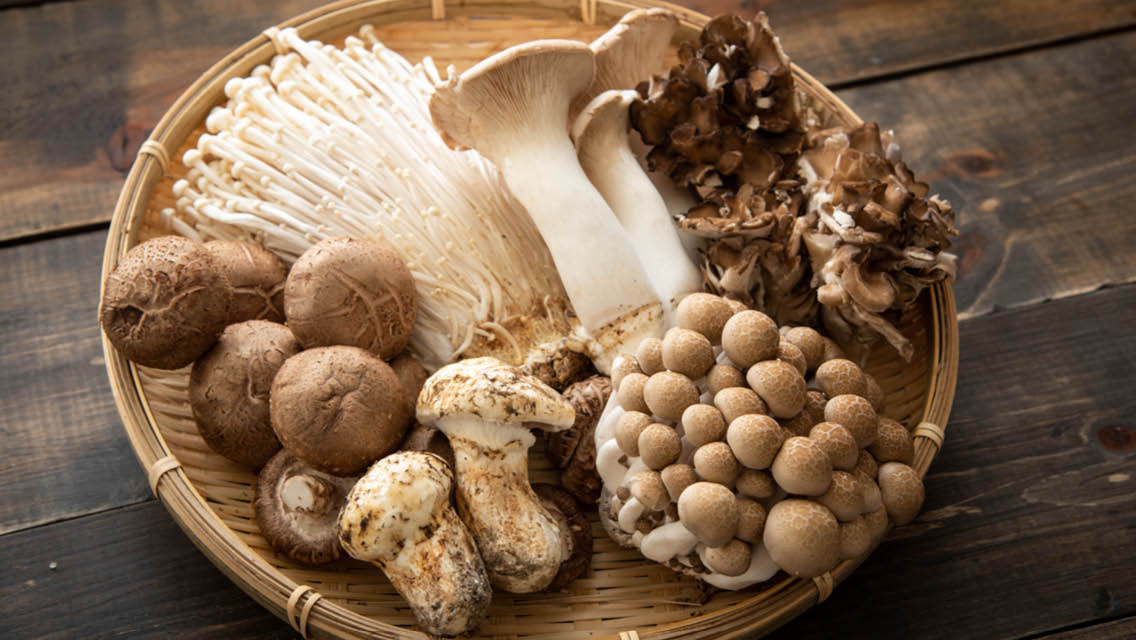Mushrooms thrive in every country, and every culinary culture prizes at least one variety as a staple or a treat. My personal favorites are chanterelle, morel and porcini, which provide incredible flavors whether fresh or dried. But there are so many more, all with different distinct tastes, textures and characteristics.
- Beech/honshimeji: Native to East Asia, all beech mushrooms available in the U.S. marketplace are cultivated. Their flavor is mild with a hint of herbs and nuts.
- Black trumpet/horn of plenty: Black trumpets have a distinctive gray-to-black color with deep flavors and aromas of smoked tea, bananas or peat. Part of the chanterelle family, with a long stem and flowering cap, they are a wonderful complement to rich autumn and winter dishes of game and toasted grains.
- Bluefoot/blewit: Exceptionally dense with a woodsy flavor profile, bluefoots have beige indented caps with violet-toned stems. Ideal for braising or mixing with softer mushrooms to contrast textures.
- Cauliflower: Aptly named for its round floret, which resembles cauliflower, these mushrooms vary in size from 2 ounces to 2 pounds. Best when cooked whole, drizzled with flavored oil and roasted quickly at a very high heat to preserve their unique texture and visual impact.
- Chanterelle: With frilly trumpet-shaped caps of gold to yellow-gold, chanterelles have a firm, meaty texture and varied flavors, including hints of apricot and hazelnut. Gathered wild in the Pacific Northwest and cultivated domestically. (My Wild Mushroom Soup is easy to make and a great way to start enjoying a variety of mushrooms.)
- Chicken of the woods: A sueded two-tone mushroom with featherlike clusters, the delicate tips of chicken of the woods (not to be confused with hen of the woods) can be quickly sautéed, while the larger midsection requires longer cooking such as slow braising, roasting or grilling after marinating.
- Enoki/enokitake: Imported from China and Japan, and also cultivated in the United States, this tiny cotton-topped, long-stemmed white mushroom is best served raw in light dishes such as salads, clear consommés, cold appetizers, omelets and crepes.
- Fairy ring: Found in mossy and grassy areas throughout temperate areas of North America, Europe and Asia, fairy rings are small and cinnamon brown with a toasty, nutty almond flavor. Look for them during early summer through fall, and simmer gently in mushroom broth, butter or cream. Their juices quickly become syrupy and have a nice mellow flavor.
- Hen of the woods/maitake: Grown abundantly in Japan and imported to the United States, hen of the woods comes in clusters with featherlike taupe or smoky-brown branches that provide a delightful gamey and nutty flavor and a spongy texture. Prepare in a variety of methods from quick sauté, high-heat roasting or slow braising in liquid.
- Huitlacoche/corn mushroom: A gray, red, blue or black mushroom found on ears of corn, huitlacoche are a delicacy in Mexico. It is often referred to as the Mexican truffle for its expense and scarce availability. Chop and cook with contrasting and lightening textures and flavors, such as eggs, cream or with sweet vegetables.
- Morel: Small to medium sized, morels have conical and honeycombed brown caps with an intense earthy flavor. They are gathered wild in many parts of the United States and grown commercially in Michigan.
- Matsutake: This beloved Japanese mushroom also grows in the Pacific Northwest where it is known as a “pine mushroom.” It has a smooth, meaty texture with a spicy aroma and cinnamon-citrus flavor notes. (Trying to fend off the flu? Matsutake and other mushrooms have immune-boosting effects. Learn more at “Immune-Boosting Foods.”)
- Oyster: Oyster mushrooms come in more shapes, sizes and colors than any other mushroom. They’re almost impossible to find wild — but readily available cultivated. Their light flavor becomes bitter when seared, so they are best roasted or gently stewed in broth, butter or cream. (Enjoy them with this Thai-Style Stir-Fry With Asparagus, Cashews, and Oyster Mushrooms.)
- Parasol: Discard the fibrous stem and enjoy the delicate, earthy caps that are marshmallow soft and parasol shaped. Ideal for stuffing and served as an appetizer or vegetable dish.
- Porcini/cèpe: Often considered the finest-tasting wild mushroom, porcini (also called cep or cèpe) have a stout stem, a brown cap with no gills, and a spongy surface under the cap of 1 to 10 inches in diameter. It is one of the few wild mushrooms that can be enjoyed raw. Thinly slice and toss with olive oil, lemon and herbs. Or pan cook, simmering slowly to release the unique aroma. When cooked, the caps turn creamy and the stems become tender and slightly crunchy. (Enjoy the Pastaless Vegetable Lasagna that appears in this article made with porcinis.)
- Shiitake: This mushroom is so popular in Japan that it is used to make shiitake soda, wine, cookies and candies. Seek smaller caps, which have a fuller flavor of garlic and pine. The caps taste best cooked whole or in bite-sized chunks; discard the stems. Sauté caps lightly, then simmer in a little liquid. (Try this Exotic Mushroom and Millet Soup made with shiitake mushrooms.)
- Truffles: The most prized and costly of all fungus, truffles grow underground while mushrooms grow above ground. Although commonly categorized in two types — black (also called French or Perigord) and white (also called Italian or Alba) — there are many varieties, including Oregon white, Chinese, Himalayan and black summer. Boasting a distinctive perfume of light garlic, herbs and light smokiness, truffles are always best added to other foods. Cook with minimum heat to release the delicate flavor, then eat at once.
This was excerpted from “How to Cook With Wild Mushrooms” which first appeared in the April 2008 issue of Experience Life.





This Post Has 0 Comments